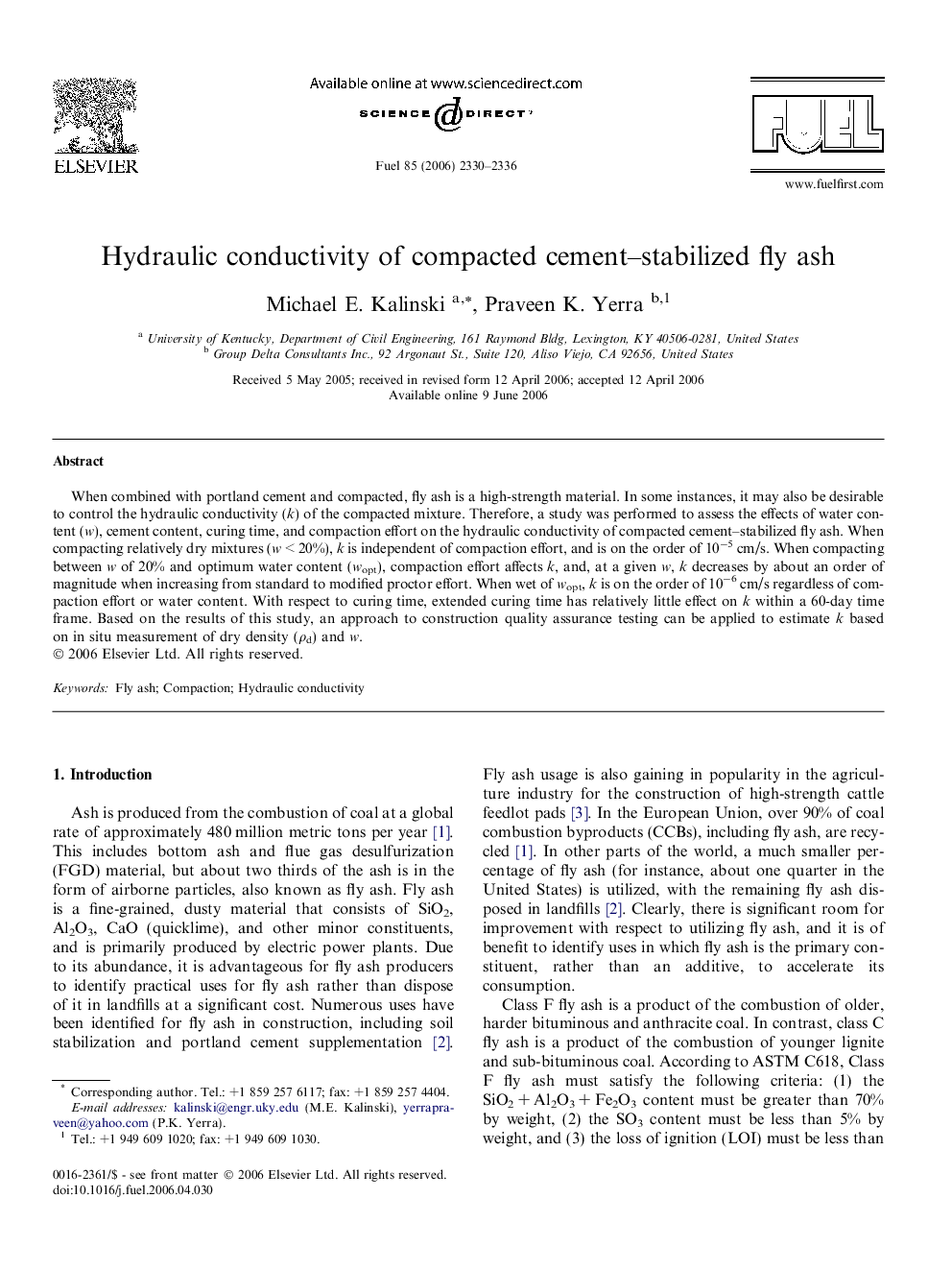| Article ID | Journal | Published Year | Pages | File Type |
|---|---|---|---|---|
| 208461 | Fuel | 2006 | 7 Pages |
When combined with portland cement and compacted, fly ash is a high-strength material. In some instances, it may also be desirable to control the hydraulic conductivity (k) of the compacted mixture. Therefore, a study was performed to assess the effects of water content (w), cement content, curing time, and compaction effort on the hydraulic conductivity of compacted cement–stabilized fly ash. When compacting relatively dry mixtures (w < 20%), k is independent of compaction effort, and is on the order of 10−5 cm/s. When compacting between w of 20% and optimum water content (wopt), compaction effort affects k, and, at a given w, k decreases by about an order of magnitude when increasing from standard to modified proctor effort. When wet of wopt, k is on the order of 10−6 cm/s regardless of compaction effort or water content. With respect to curing time, extended curing time has relatively little effect on k within a 60-day time frame. Based on the results of this study, an approach to construction quality assurance testing can be applied to estimate k based on in situ measurement of dry density (ρd) and w.
